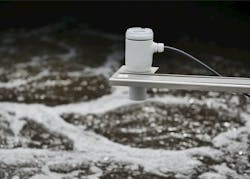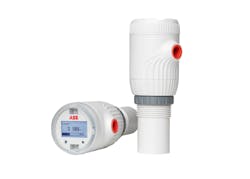ABB’s ultrasonic level transmitter wins design award
ABB’s LST200 ultrasonic level transmitter recently was awarded best in category for physical, as well as technical, design. The winning ABB transmitter is particularly notable for solving the surface condensation challenge often faced by plant owners, where a buildup of water has historically affected accuracy of essential plant readings. The LST200 uses new generation, active surface technology known as a “Lotus Effect” whereby the liquid will drop off before it pools into larger drops that could then cause problems, offering an effective and cost-effective solution.
The Red Dot Award is a highly regarded international design prize that began in 1955. More than 15,000 admissions are submitted annually from more than 70 countries around the world.
The Red Dot Awards jury said “This robust level gauge impresses with a simplicity that has been thought through down to the last detail. It presents itself as a proven means of ensuring efficiency and reliability.”
Jacques Mulbert, president of ABB’s Measurement & Analytics Division, said, “To win a product design award of this magnitude is an honor. When developing the LST200 we focused on building in design and technical excellence throughout to create a product that features an intuitive user experience and powerful industrial capabilities with the overall aim of making measurement easy.”
The smart ultrasonic level transmitter is used to measure distance between one object and another by establishing the time between emission and reception. It can be used in various industrial environments but has been designed especially for the water and wastewater treatment applications. Its design focuses on simple operation and reliability. It is modular, which lends itself toward ease of installation, maintenance and upgrading. A built-in interference filter ensures that information obtained from the sensor can be used and analyzed easily.
Innovative features include the adaptive intelligent algorithms based on long-term experience data and the inclusion of the ABB Ability™ Field Information Manager software for the PC which improves customer configuration efficiency.
Using an ultra-stable algorithm, the device can detect environmental changes including temperature, disturbance, measuring distance and signal strength. It then automatically compensates the variations to keep the device performing at its best.

